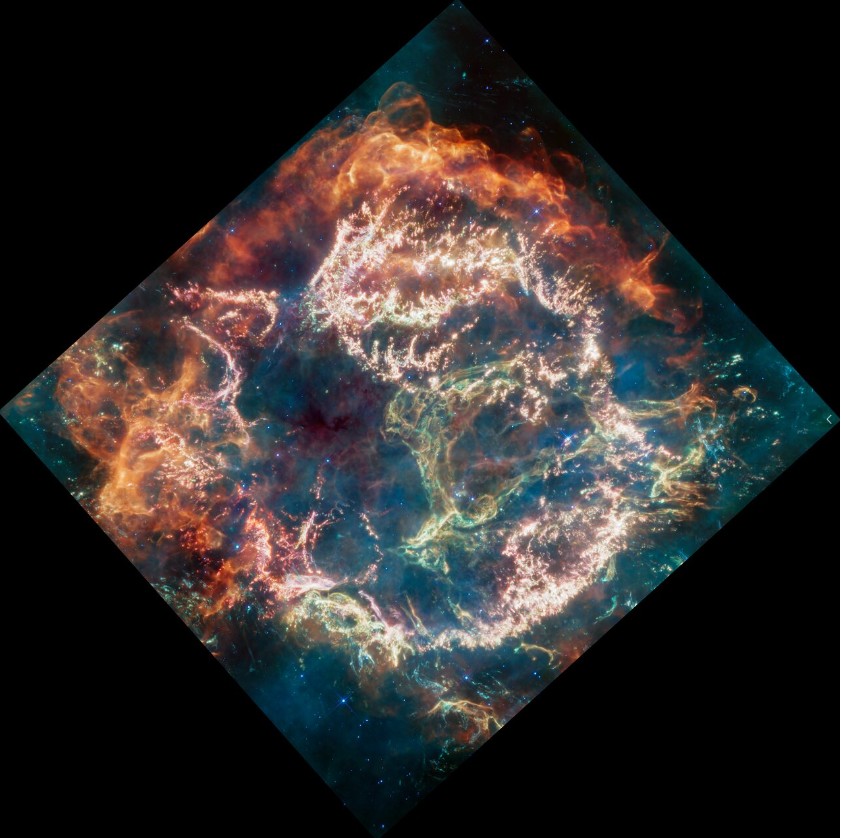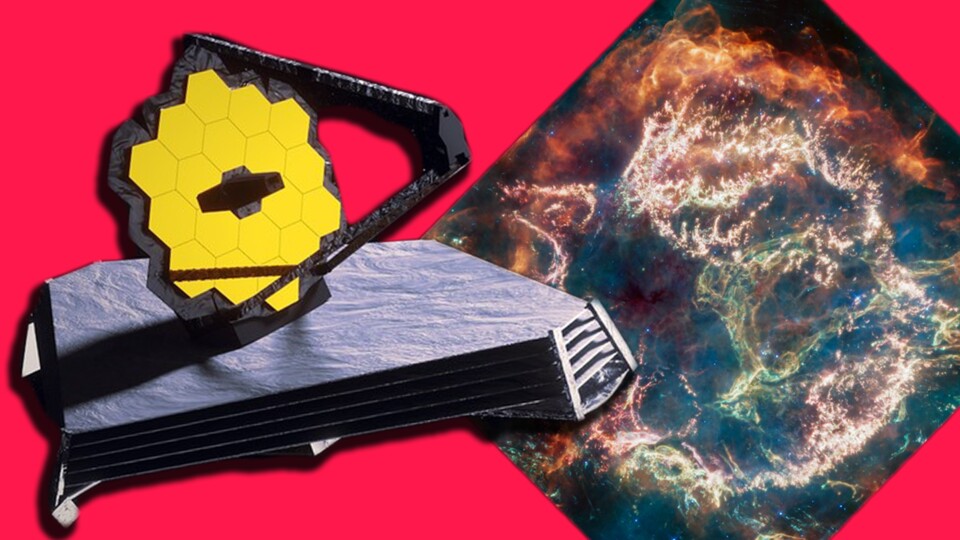The James Webb Space Telescope recently delivered a new image of a supernova. The photo shows the remains of the supernova Cassiopeia A (short: Cas A). This is about 11,000 light-years from Earth. For comparison: Our Milky Way is 100,000 light-years across.
Particularly exciting about it: There are two different images of Cas A. The image on the left shows Cas A taken with the Hubble telescope, on the right is the image from the James Webb telescope mentioned above (click it on esawebb.org, or just move it right here below) .

The most important key data on the new image of Cas A:
- Mid-infrared range: The picture was taken in this area. The so-called MIRI instrument (Mid-Infrared Instrument) was used for this purpose.
- Expert Voice: Tea Temim (astronomer at the renowned Princeton University), who worked on James Webb’s MIRI, says of the image now published:
Compared to previous infrared images, the new image is incredibly detailed.
- One of the brightest celestial objects: Cas A can be described as such – at least within the radio wave range
What does better and better infrared images of supernovels mean for science? We answer this question briefly and concisely below:
- More detailed insights into cosmic processes: Supernovas create many of the heavier elements in the universe, including silicon, sulfur, and iron. Anyone who understands supernovels better also understands the formation of these heavy elements better.
- Expert Voice: The Canadian astronomer Dan Milisavljevic from Purdue University puts the scientific value of Cas A as follows:
Cas A offers us the opportunity to examine the debris field of an exploded star and to perform a kind of stellar autopsy.
Milisavljevic goes on to say: Thanks to Cas A, scientists can better understand how supernovae form in the first place.
By the way: Colleague Lucas Kaczynski recently reported on a space photo from the James Webb telescope. At that time, the so-called Wolf-Rayet star WRT 124 was photographed – just before it went into a supernova.
What is a supernova? The lifetime of a star is also limited. However, the end of some stars is particularly spectacular: the star explodes in a mixture of light and energy. This cosmic swan song is called a supernova. A supernova leaves behind a dense core that evolves into either A) a black hole or B) a neutron star.
What does Cassiopeia mean? The name Cassiopeia goes back to a character in Greek mythology. In the stories, Cassiopeia is the mother of Andromeda. She is characterized as arrogant and vain. Cassiopeia A consists of supernova remnants located in the constellation Cassiopeia.
Now it’s your turn! Did news from the universe trim your everyday problems down to a healthy level? Or have you completed your professional training as a star atomizer with Harald Lesch and are constantly chatting with Neil deGrasse Tyson? Feel free to write us in the comments what you think of the new photo of Cas A!



 What’s happening with AI? Researcher explains why you can look forward to more creative NPCs, competition for ChatGPT and hot dog tomatoes
What’s happening with AI? Researcher explains why you can look forward to more creative NPCs, competition for ChatGPT and hot dog tomatoes Cowboy launches new on-demand service: That’s what’s inside
Cowboy launches new on-demand service: That’s what’s inside The new 4K Fire TV stick is now brutally reduced and transforms your old television into a smart TV
The new 4K Fire TV stick is now brutally reduced and transforms your old television into a smart TV The best mouse I’ve ever had, convinces me for gaming, work and home office and is different than all its predecessors!
The best mouse I’ve ever had, convinces me for gaming, work and home office and is different than all its predecessors! The first smart glasses suitable for everyday use that you can buy
The first smart glasses suitable for everyday use that you can buy